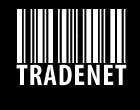BLOGSHARP: Cutting Edge Posts

Flexible Borescope Allows Close-up Inspections Around Bends
2007-03-08 10:33:40( Technology )
When you're asked to inspect the insides of narrow space or an enclosure, the only way you can accomplish the task is through the use of a bore scope. Borescope inspections are performed on aircraft engines, automotive cylinders, pistons, the rifling in a gun barrel, castings, and other items. Borescopes are also used in building inspections and law enforcement forensic applications.
A bore scope basically is a tube with an eyepiece on one end and an objective lens at the other. Inside the tube, there is an optical system to relay the image from the objective lens back to the eyepiece. There are two types: rigid bore scope and flexible borescope.
When you have to look around bends and angles, you may need a flexible borescope. In a flexible borescope, the eyepiece and the objective lens are housed in a flexible tube, also containing optical fibers to illuminate the object for inspection.
When you have already illuminated the target object for borescope inspection, the objective lens in your flexible borescope forms an image of the target, which is carried by the optical relay system to the eyepiece. The relay system may contain a device to enlarge the image before it's presented for viewing. Alternatively, you may fit a coupler lens into the eyepiece which you then connect to a video camera or a monitor for more convenient viewing and even bigger magnification.
When you select a bore scope, your criteria should include degree of resolution and access. The number of optic fibers in flexible borescope models affects the resolution: more fibers mean better resolution. The range of articulation achieved by a flexible borescope influences its ability to access remote targets. In addition, it's also important to consider the angle of view and the field of view of the objective lens.
All rights Reserved © Tradenet Services srl
Do not duplicate or redistribute in any form.
Blog
Tags
- Arts (73)
- Automobiles (375)
- Beauty (46)
- Business (989)
- Careers (12)
- Charity (71)
- Computers (788)
- Dating (153)
- Education (333)
- Entertainment (257)
- Family (39)
- Financial (2171)
- Games-Toys (7)
- Garden (68)
- Health (439)
- Hobbies (102)
- Home (311)
- Insurance (662)
- Legal (562)
- Online Shopping (67)
- Pharmeceutical-Medical (393)
- Real Estate (263)
- Sports (48)
- Style-Fashion (4)
- Technology (238)
- Telephony (235)
- Travel (283)
- Web Hosting-SEO-Web Design (786)
Archivio
- 2007
- 2008
- 2009
Tradenet Services srl 02860350244 Via Marconi, 3 36015 Schio (VI) Italy
+39-0445-575870 +39-0445-575399